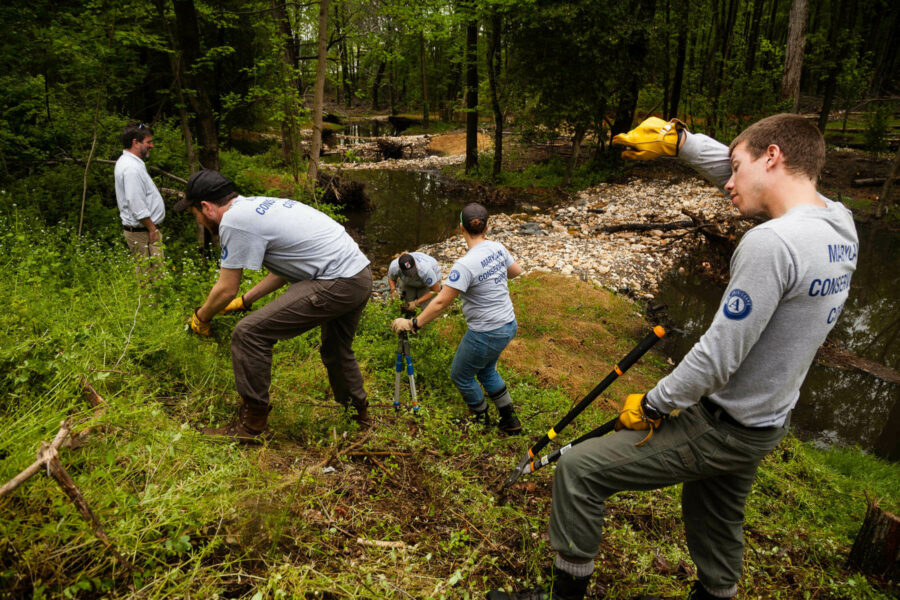An "impossible" stream to restore
Volunteers come together to complete a decade-long effort to clean up a tributary of Maryland's South River

Volunteers come together to complete a decade-long effort to clean up a tributary of Maryland's South River

Comments
They did a beautiful job on this project and should be commended for their effort. I kayak up this creek regularly. Even with all our wonderful things that we’re doing to try to the restore the bay I believe it’s futile to save these once beautiful creeks. With the development all around, in this case 85% impervious surface, how can we do anything that will really save these waterways and the bay itself. It’s impossible to remove impervious surfaces so all we can really do is slow down the process of degradation.
Restoration of streams in urban landscapes is quite challenging and it is often treated as a distinct subdiscipline. The large amount of impervious cover in urban watersheds typically leads to transformed hydrology, and channels often incise in response to increased runoff and higher flow peaks. Urban sources account for significant quantities of important diffuse pollutants, and urban watercourses are typically badly polluted. As well as toxic metals, hydrocarbons including PAHs, and suspended matter, priority urban pollutants include fecal pathogens and nutrients.
Thank you!
Your comment has been received. Before it can be published, the comment will be reviewed by our team to ensure it adheres with our rules of engagement.
Back to recent stories